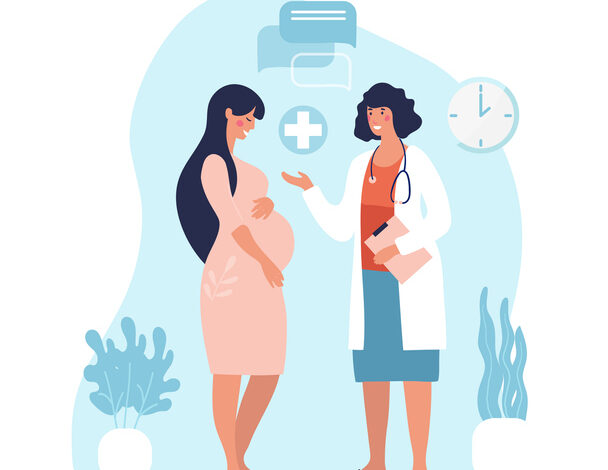
Resources to Assist in the Reduction of Maternal Mortality and Morbidity
BY REBECCA PEREZ, MSN, RN, CCM, FCM
The health of mothers and children are interrelated and impacted by many factors. Maternal health is defined as the health of a mother during pregnancy, childbirth and the postpartum period (KFF, 2022). Child health is defined as the health of a child from birth through the adolescent years, primarily focusing on birth through five years of age (KFF, 2022). Newborn health focuses on the health of an infant from birth through the first 28 days of life. Improving the health of pregnant women results in the improved health of their children.
According to the World Health Organization (WHO), an estimated 287,000 women died during and following childbirth in 2020. The most common causes were due to excessive blood loss, infection, high blood pressure, unsafe abortion and obstructed labor (WHO, 2023).
Despite spending more on healthcare than any other country in the world, the United States has one of the highest mortality rates in the developed world (NIH, n.d.). The highest pregnancy-related mortality rates (PRMR) are connected to racial and ethnic disparities. According to the National Institutes of Health (NIH), Black and American Indian/Alaska Native women experience higher pregnancy-related mortality rates than white or Hispanic women (NIH, n.d.). Black women have the highest PRMR regardless of age, education, geographic location, income or socioeconomic status (NIH, n.d.). In 2020, the mortality rate for non-Hispanic Black women was 55.3 deaths per 100,000 live births, as compared to 19.1 per 100,000 for white women and 19.2 deaths per 100,000 for Hispanic women (NIH, 2022).
The 40 weeks of gestation result in physical, emotional and social changes and carry through the year following childbirth. The physical demands of pregnancy and any complications that occur can result in chronic conditions later in life. For example, hypertension in pregnancy increases the risk of cardiovascular disease twofold (NIH, n.d.). The factors that influence maternal morbidity and mortality include pre-pregnancy health, mental health, opioid use, overdose, prenatal care and the receipt of the right level of care when needed (NIH, 2022).
The World Health Organization (WHO), National Institutes for Health (NIH), American College of Obstetrics and Gynecology (ACOG) and Centers for Disease Control and Prevention (CDC) have research and initiatives to reduce maternal mortality and bring equitable care to women, especially those at highest risk. In 2022, the CDC published their “State Strategies for Preventing Pregnancy-Related Deaths,” which is the result of maternal mortality review committees across the United States. A consensus on processes and terminology was developed to better understand and prevent maternal mortality. Not only was data collected and reviewed, but the momentum of the project has resulted in improved data collection and making the data actionable. This comprehensive resource provides actionable steps for organizations and communities to reduce the rate of maternal mortality. The following is an outline of the guide (CDC, 2022):
- Use of data to understand the scope of the problem
- Understand the context of the solution
- Identify potential goals and strategies
- Invest in and partner with communities
- Ensure access to care for all pregnant and postpartum persons
- Ensure quality care for all pregnant and postpartum persons
- Strengthen maternal mortality data
- Selected strategies
The CDC recommends that equity be at the heart of any processes or programs developed to reduce maternal mortality.
The National Institutes for Health created a Maternal Morbidity and Mortality Web Portal that includes research related to maternal health, funding opportunities for research related to eliminating disparities, improvements in Native American health, and many other initiatives, as well as information and resources relevant to maternal mortality and morbidity. These resources include multiple reports with information and recommendations from WHO, NIH, AHRQ and CDC to name a few (NIH, n.d.). The AHRQ resource, “Maternal Safety Primer,” outlines the many contributors to poor maternal health and outcomes. The contributing factors include those in the community and health facility, and those related to patient and family, provider and system. Maternal Safety Bundles are available for use, and these include Postpartum Discharge Transitions, Safe Reduction in Primary Cesarean Birth, and Hypertension in Pregnancy to name a few (AHRQ, 2019). A total of eleven maternal safety bundles and four safety tools can be accessed for use as part of the Council on Patient Safety in Women’s Health Care (AHRQ, 2019).
Among the many initiatives by WHO, one that stands out is a report published in 2019, “Community health workers delivering primary health care: opportunities and challenges” (72nd World Health Assembly, 2019). In this report, the World Health Assembly asserts that community health workers can assist in the advancing equitable access to safe and comprehensive health services to those in urban and rural settings, and can assist with the reduction in inequities because their role is one of gaining trust and engagement in the communities served (72nd World Health Assembly, 2019). The report encourages organizations to consider how the role of the community health worker can assist in improved access to care in maternal health and other health conditions.
The American College of Obstetrics and Gynecology has identified a policy priority to eliminate preventable maternal mortality and morbidity by supporting federal and state legislation that addresses prevention and systems improvements (ACOG, 2023). The resources they have published include the Alliance for Innovation on Maternal Health (AIM), Optimizing Postpartum Care, Levels of Maternal Care, and Our Commitment to Changing the Culture of Medicine (ACOG, 2023). AIM is an especially important initiative as it is focused on patient safety for improved self-care. ACOG also provides clinical guidance for conditions such as pregnancy and heart disease, obesity in pregnancy and opioid use disorder in pregnancy. They developed a patient safety tool that outlines urgent maternal warning signs. This tool can help patients know when to contact their provider. ACOG also provides patient FAQ documents and infographics for education and support.
Case managers working with high-risk pregnancy can access any of these resources to strengthen current efforts to reduce poor outcomes. Reducing inequities and increasing access to appropriate care are the obvious answers, but guidance and resources are needed. Links to some these resources are provided here:
World Health Organization: Maternal Health
https://www.who.int/health-topics/maternal-health#tab=tab_1
Centers for Disease Control and Prevention: State Strategies for Preventing Pregnancy-Related Deaths
https://www.cdc.gov/reproductivehealth/maternal-mortality/preventing-pregnancy-related-deaths/state-strategies.html
National Institutes of Health: Maternal Morbidity & Mortality Web Portal
https://orwh.od.nih.gov/mmm-portal/what-mmm
American College of Obstetrics and Gynecology: Eliminating Preventable Maternal Mortality and Morbidity
https://www.acog.org/advocacy/policy-priorities/maternal-mortality-prevention
Alliance for Innovation on Maternal Health: AIM Patient Safety Bundles
https://saferbirth.org/
Alliance for Innovation on Maternal Health: Urgent Maternal Warning Signs
https://saferbirth.org/aim-resources/aim-cornerstones/urgent-maternal-warning-signs-2/
References
72nd World Health Assembly. (2019, May 24). Maternal Health. Retrieved from World Health Organization: https://apps.who.int/gb/ebwha/pdf_files/WHA72/A72_R3-en.pdf
ACOG. (2023). Eliminating Preventable maternal Mortality and Morbidity. Retrieved from American College of Obstetrics and Gynecology: https://www.acog.org/advocacy/policy-priorities/maternal-mortality-prevention
AHRQ. (2019, September 7). Maternal Safety. Retrieved from Patient Safety network: https://psnet.ahrq.gov/primer/maternal-safety
CDC. (2022, June 15). State Strategies for Preventing Pregnancy-Related Deaths: A Guide for Moving Maternal Mortality Review Committee Data to Action. Retrieved from Centers for Disease Control and Prevention: https://www.cdc.gov/reproductivehealth/maternal-mortality/preventing-pregnancy-related-deaths/state-strategies.html
NIH. (2022). Maternal Morbidity and Mortality: What do we know? How are we addressing it? Retrieved July 30, 2023, from NOH Maternal Morbidity and Mortality Web Portal: https://orwh.od.nih.gov/sites/orwh/files/docs/ORWH22_MMM_Info_Factsheet_508.pdf
NIH. (n.d.). Maternal Morbidity & Mortality Web Portal. Retrieved July 30, 2023, from National Institutes of Health: https://orwh.od.nih.gov/mmm-portal/what-mmm
WHO. (2023). Maternal Health. Retrieved from World Health Organization: https://www.who.int/health-topics/maternal-health#tab=tab_1
 Rebecca Perez, MSN, RN, CCM, FCM, is an experienced registered nurse with a master’s degree in nursing, is a Certified Case Manager, a member of the Omega Gamma Chapter of Sigma Theta Tau International Nursing Honor Society, Capella University National Society of Leadership and Success, a member of the National Quality Forum Leadership Consortium and most recently was bestowed the Fellow in Case Management distinction. Her most recent works are primary author for Case Management Society of America Integrated Case Management: A manual for Case Managers by Case Managers 2nd Edition, CMSA’s Case Management Adherence Guide 2020, CMSA’s Case Management Adherence and Transition of Care Guide for Clostridiodes difficile, CMSA’s Case Management Adherence and Transitions of Care Guide for Hepatic Encephalopathy, Opioid Use Disorder Guide for Case Managers, and Antimicrobial Stewardship Guide for Case Managers. She is the author of numerous professional articles and resources for CMSA, and speaker on case management topics. She is the senior manager of education for CMSA and executive director for the Case Management Society Foundation.
Rebecca Perez, MSN, RN, CCM, FCM, is an experienced registered nurse with a master’s degree in nursing, is a Certified Case Manager, a member of the Omega Gamma Chapter of Sigma Theta Tau International Nursing Honor Society, Capella University National Society of Leadership and Success, a member of the National Quality Forum Leadership Consortium and most recently was bestowed the Fellow in Case Management distinction. Her most recent works are primary author for Case Management Society of America Integrated Case Management: A manual for Case Managers by Case Managers 2nd Edition, CMSA’s Case Management Adherence Guide 2020, CMSA’s Case Management Adherence and Transition of Care Guide for Clostridiodes difficile, CMSA’s Case Management Adherence and Transitions of Care Guide for Hepatic Encephalopathy, Opioid Use Disorder Guide for Case Managers, and Antimicrobial Stewardship Guide for Case Managers. She is the author of numerous professional articles and resources for CMSA, and speaker on case management topics. She is the senior manager of education for CMSA and executive director for the Case Management Society Foundation.
Image credit: ISTOCK.COM/TATYANA ANTUSENOK



